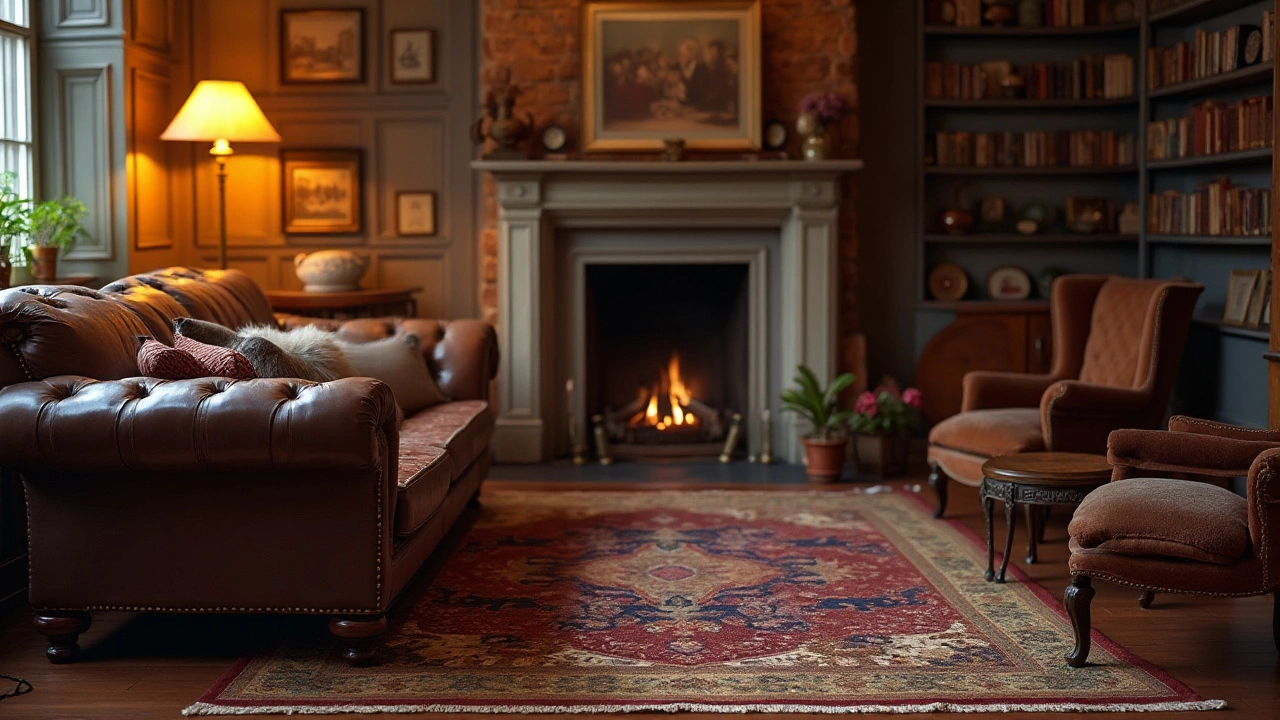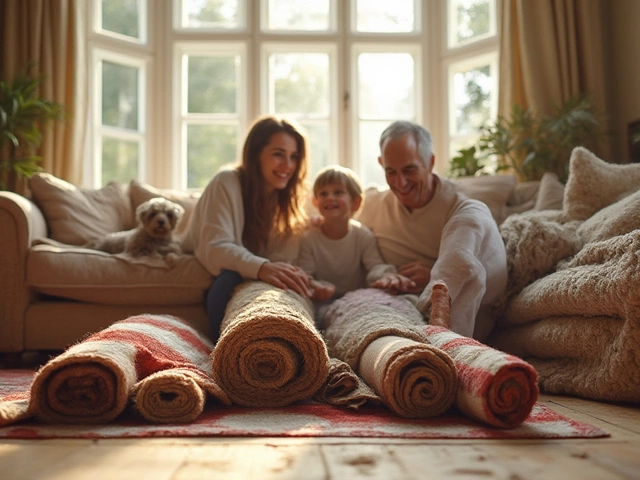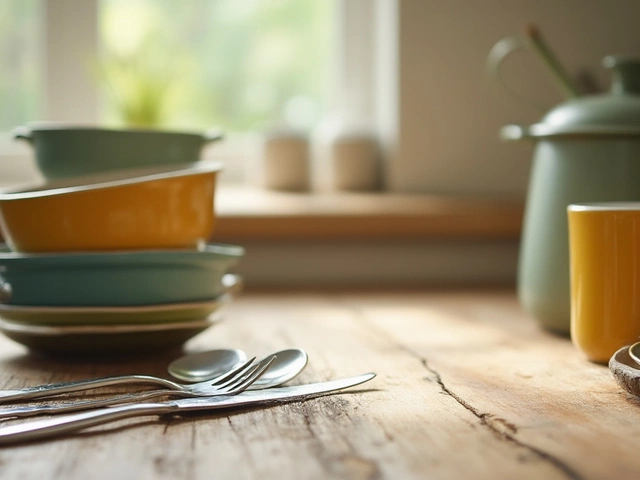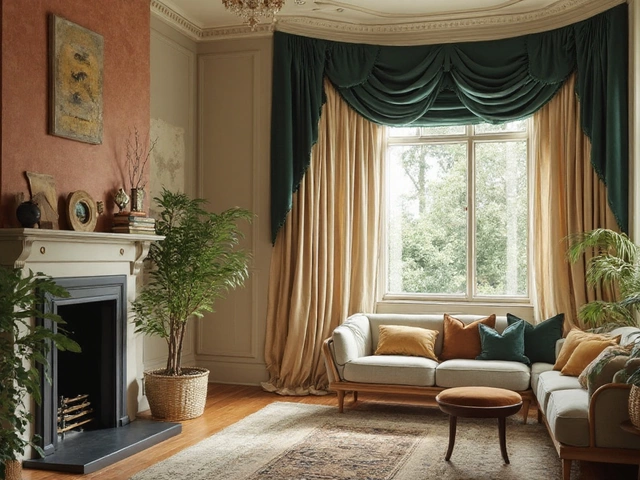When it comes to home decor, few debates are as lively as the question of whether a rug should go under a sofa. It’s a choice that many face when aiming to create a cozy and stylish living space. Deciding on rug placement isn't just about aesthetics—it's about finding harmony between beauty and practicality.
Rugs hold the power to transform a room, tie together furniture pieces, and add texture and warmth underfoot. But should they find themselves under the centerpiece of most living rooms: the sofa? Join us as we explore both sides of this home design puzzle, offering tips and insights to guide your decision-making process.
- The Role of Rugs in Home Decor
- Pros of Placing Rugs Under Sofas
- Cons of Putting Rugs Under Sofas
- Factors to Consider When Deciding
- Tips for Proper Rug Placement
- Alternative Rug Placement Ideas
The Role of Rugs in Home Decor
Rugs have been a staple in home decor for centuries, serving both practical and aesthetic purposes. Far from being merely floor coverings, they are essential elements in interior design that can define spaces, add warmth, and express personal style. The right rug can transform a bland room into a captivating and inviting area, all while protecting flooring and adding insulation. Historically, rugs have been used in homes because of their versatility—they can seamlessly integrate with almost any style, from minimalist to bohemian.
In rooms where the living spaces are open-plan, rugs serve as visual anchors, creating defined areas within a larger space. Placing a rug under key furniture pieces such as a sofa can help to delineate the living area from the dining or kitchen spaces, promoting a sense of order and harmony. Moreover, rugs inject color, pattern, and texture into a home, allowing homeowners to refresh their decorating scheme without significant overhauls. A change as simple as swapping out a rug can keep a room feeling fresh and current.
“Rugs can act like artwork for the floor, and they are a great way to frame a room.” — Nate Berkus, interior designer
The material of the rug chosen plays a critical role as well; wool rugs are favored for their durability and stain resistance, while cotton rugs are often lightweight and easy to clean. Rugs made of synthetic fibers, on the other hand, offer practical benefits such as being budget-friendly and having a variety of available colors and patterns. Antique rugs, particularly Persian and Oriental styles, bring a touch of history and luxury, often becoming treasured family heirlooms that are passed down through generations.
When considering rug placement, color coordination is vital. A strategically chosen rug can pull together various elements in a room, coordinating with wall colors, artwork, and furniture by using subtle hues and bold patterns. Rugs also offer a sensory experience: they add an element of softness when walking barefoot and can absorb sound, making a room feel quieter and more peaceful. Absorption of sound is especially important in apartments or lofts with high ceilings, where echoes can become an acoustic challenge.
Pros of Placing Rugs Under Sofas
Placing a rug under the sofa can revolutionize the feeling of the entire room by adding a structured, cohesive look that's not only appealing to the eye but also practical in many scenarios. When a rug is strategically placed, it acts as an anchor for the room—visually tying together disparate pieces of furniture into a unified whole. This trick is especially valuable in open floor plans where defining spaces is key to maintaining order.
One of the major benefits is the enhancement of warmth and comfort. A rug beneath a sofa offers a plush surface, creating a cozy environment where family and friends feel tempted to gather. On those chilly winter mornings, stepping onto a cold floor can be an uninviting experience. A well-placed rug provides thermal comfort, making your space more inviting and intimate.
Aesthetic appeal is another noteworthy advantage. A carefully chosen rug can introduce pops of color, exciting patterns, or interesting textures that complement your existing color palette, breathing life into an otherwise neutral or monochromatic room. This color and texture not only enrich the visual fabric but set the tone for the room’s mood.
Moreover, placing a rug under a sofa can be practically advantageous for furniture longevity. This method can protect your floors from scratches and damage caused by furniture movement. Moreover, rugs can prevent dirt and wear directly impacting the flooring, effectively maintaining the home's condition over time.
Rugs can also act as acoustic buffers, especially important for those who live in multi-level homes. They absorb ambient noise, which can be a surprising disturbance in rooms with hard floors like hardwood or tile. Such absorption can drastically improve sound quality within a space, reducing echo and creating an environment perfect for conversation and relaxation.
"A well-chosen rug can define a room, enhance its architecture, and introduce an element of magic."
In multi-functional spaces, like living-dining combinations, a rug under a sofa can help delineate the living area, giving a sense of boundaries without the need for walls or screens. This demarcation can make large rooms feel more manageable and less cavernous, inviting people into the defined areas naturally.
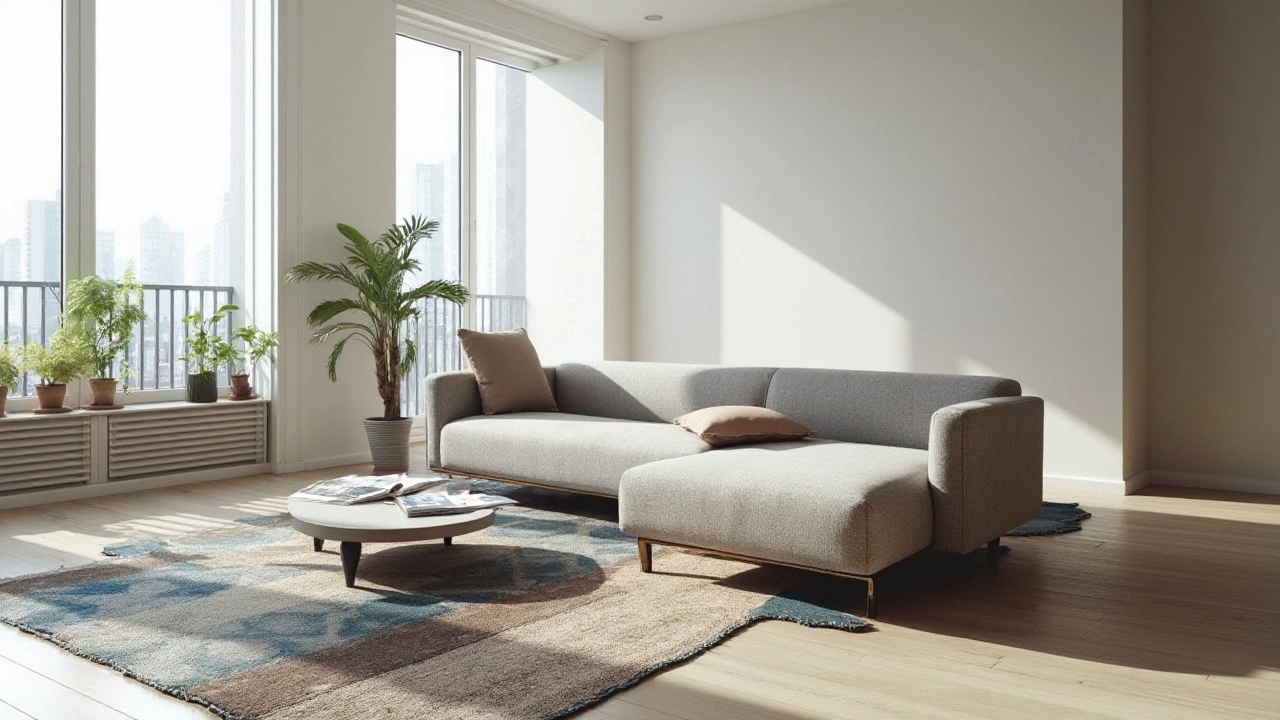
Cons of Putting Rugs Under Sofas
While slipping a rug beneath your sofa can ground your seating area beautifully, it does come with its caveats. One major concern is the risk of mismatched proportions. If the rug is too small while under the sofa, it can create an awkward visual imbalance, making the sofa look oversized or the rug appear out of place. This proportion mismatch is especially visible in larger living rooms where the scale of furniture and floor covering harmony is immediately noticeable.
Another downside is related to furniture indentations. Over time, the weight of a sofa can lead to unsightly dents in the rug's fiber. This can become more than an aesthetic issue, as regular day-to-day seating might deepen these imprints, potentially affecting the rug's durability. Periodic repositioning can help, but it involves additional effort and may disturb the room's organization. According to Kelly Hansen, an interior designer with over two decades of experience, "Repositioning may reduce dents but ultimately changes the rug's fibers, altering its original texture."
When it comes to cleaning, having a rug under a sofa can complicate matters. Spills and crumbs tend to accumulate in hard-to-reach areas beneath the sofa, increasing maintenance challenges. Essentially, you may need to pull out the sofa more often during cleaning sessions to reach the hidden spots. Regular vacuuming becomes a task that requires patience and quite a bit of maneuvering, particularly in smaller rooms where moving the sofa out of the way is not a straightforward task.
Ventilation issues can sometimes arise. When a sofa sits on top of a rug, air circulation underneath the rug is restricted. If hot air is trapped under damp conditions, it can lead to humidity build-up, fostering an atmosphere where molds and unpleasant odors might develop over time. In regions with a high humidity environment, this can pose a significant challenge, and unfortunately, regular deodorization might not always do the trick.
Finally, considering the potential clash of styles, many homeowners worry about the risk of visual discord when mixing patterns or shades between the rug and other furnishings. The rug should complement, not overwhelm, the existing decor theme. If the rug choice is off, it could upset the room's balance, drawing focus away from other design elements that might be the intended focal points, such as paintings or ornaments.
Factors to Consider When Deciding
Choosing whether to place a rug under your sofa is not just a mere question of taste. There are several factors that play into making the right decision. First and foremost, the size of your living room should be considered. In small spaces, placing a rug under the sofa can help define the seating area and make the room feel more cohesive. On the other hand, in large spaces, a central rug can act as an anchor, bringing together all the elements into a unified look. Consider also the balance of colors and patterns in the room. A rug can be the unifying piece that ties together different decor elements, or it can stand out as a focal point with its unique pattern or design.
Another factor worth considering is the style of the sofa and other furniture pieces in the room. A modern sofa may benefit from a sleek, minimalist rug, while a more traditional couch could pair well with a patterned, ornate rug. Think about the textures as well—combining different materials can add depth and interest to your decor. Moreover, consider the daily use and functionality of the space. High-traffic areas may require durable rugs that can withstand wear and tear, especially if pets or children are part of your household. It’s important to select a rug that not only pleases the eye but can also handle the life that's lived on it.
Rug dimensions are another crucial consideration. Many design experts suggest that a rug should extend at least 18 inches past either side of the sofa to create a balanced look. However, this rule is not set in stone and can be adapted based on personal preference and living space. A rug that's too small can make the room feel disjointed, while an excessively large rug might overwhelm the space. Reflect on the “two-third rule” often recommended by designers: the idea that your rug should cover two-thirds of the seating area. This rule provides a guideline that ensures both functionality and aesthetic harmony.
The material of the rug is an equally important consideration. Natural fibers like wool and cotton are favored for their durability and comfort, while synthetic fibers like polyester offer affordability and easy maintenance. Keep in mind any allergies or sensitivities within the household when choosing a material. Finally, one should not overlook the practical aspect concerning cleaning and maintenance. Regular cleaning will keep your rug looking fresh and new, and considering a rug's cleanability before purchase is always wise.
"Rug placement can either make or break a room's design." – Victoria Smith, interior design expert
Budget is another practical factor that should not be ignored. Investing in a high-quality rug can add immense value and beauty to a space, but it’s important to balance this with your financial capacity. Affordable rugs still provide plenty of style and can be swapped out easily without much regret if your style or needs change. Consider all these aspects before making a final decision, weighing both form and function to find the perfect balance for your home.
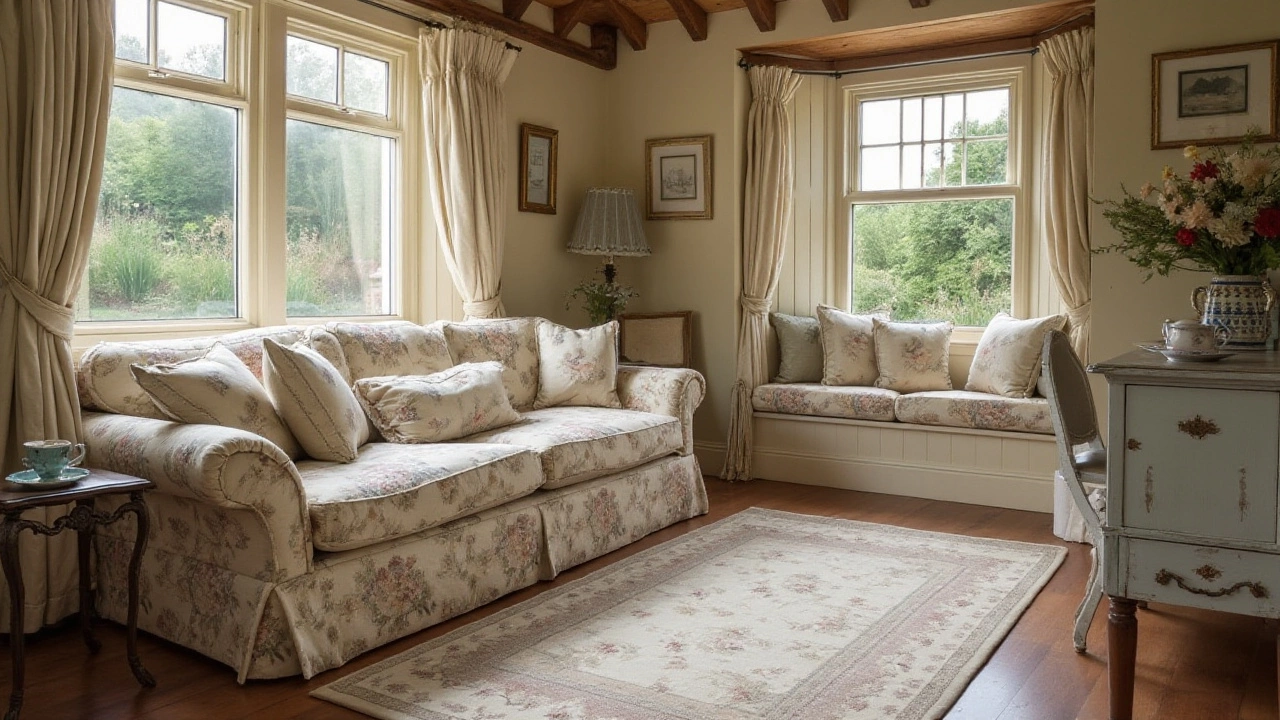
Tips for Proper Rug Placement
Choosing the right spot for your rug isn't just an art; it’s also somewhat of a science, involving several elements that can alter a room's entire feel. First and foremost, consider the dimensions of both your rug and the room it’s going into. A correctly sized rug should comfortably touch all furniture pieces in a sitting area, serving as a binding agent that holds the room together. If your living room allows it, position the sofa fully or partially on top of the rug. This technique not only stabilizes the seating area but also defines the space.
Next, pay attention to color and pattern. A patterned rug introduces an element of playfulness and can mask dirt, whereas a solid color might fade or show wear faster. Make sure the rug complements or subtly contrasts the existing color scheme of your home decor. When dealing with high-traffic areas or spaces frequented by kids or pets, durability is key. Choose materials that are easy to clean and withstand the test of time, like wool or synthetic fibers that offer durability without sacrificing beauty.
Sara Morrow, design editor at House Beautiful, once said, "Think about fast fashion versus investment pieces. A carefully chosen rug can outlast trends and become the centerpiece of your room for decades."
When opting for specific placement, remember that balance is crucial. A rug placed under just the front legs of a sofa can create an enticing visual anchor without overwhelming the space. Try to keep a walking path open, allowing the room to flow effortlessly into adjoining spaces. This not only enhances visual harmony but also adds functionality to your decor.
Lastly, don't forget practical considerations such as underlay or rug pads. These not only make walking on your rug more comfortable but also help prevent slips and falls, especially on hardwood or tiled floors. Rug pads help extend the life of your rug by acting as a buffer between the rug and the hard floor, reducing wear and tear. Consider the height of your door, ensuring it can open and close smoothly without catching on the rug.
Alternative Rug Placement Ideas
Sometimes, stepping away from tradition opens up a world of creativity and innovation in interior design. If placing a rug under the sofa doesn’t sit right with you, there are countless other ways to use these textiles to enhance your living area. One intriguing approach is to use rugs to define separate zones within a larger space. For instance, an open floor plan may benefit from a rug that creates a cozy reading nook or a separate dining area. This method not only enriches the decor but also serves a functional purpose in managing the room's flow and energy.
In smaller spaces, a rug can boldly assert its role as the room’s focal point by choosing vibrant patterns or colors that pop against neutral furniture tones. Allow the rugs to stand out by placing them adjacent to the sofa, helping to create a layered visual effect that draws the eye and creates depth. Another compelling strategy is to align the rug parallel to walls that carry bold art pieces or shelves, which ties the vertical and horizontal elements of a room together in harmony.
For rooms that welcome guests or host gatherings, consider using a runner rug. It doesn’t need to be limited to hallways. A runner placed in front of the sofa or near the entrance adds a touch of elegance and helps guide guests through the space. In homes with wall-to-wall carpet, laying down a rug at a different angle or layering it on top can break the monotony and introduce a new design dimension. As renowned designer Nate Berkus once said,
"Your home should tell the story of who you are, and be a collection of what you love brought together under one roof."Don't fear experimenting with layers; an oddly shaped rug or one that’s partially hidden under a piece of furniture can often bring the entire room's decor into a cohesive story.
If you’re mindful of eco-friendly choices, consider repurposing old rugs by crafting them into custom pieces. Smaller rugs can be sewn together to create a unique mosaic or quilt-like appearance that captures the spirit of sustainability while adding charm to the room. Another playful idea could involve using rugs as drop-down seats or hanging them on walls as tapestries, which not only adds texture but can also modify acoustics, making your space feel more engaging.
For those who enjoy seasonal decor changes, rotating rugs by season lets you refresh your setting without needing a complete decor overhaul. In warmer months, go for lighter, breathable materials like jute or cotton with cool colors. When winter arrives, swap them out for plush, fluffy rugs in rich, warm hues to add warmth and cosiness to your living environment. According to a survey by HomeGoods, swapping accessories, like rugs, seasonally can keep your home feeling fresh and up-to-date without a significant investment or effort.
| Season | Rug Material | Color Palette |
|---|---|---|
| Spring | Cotton, Satin | Pastel Blues, Greens |
| Summer | Jute, Sisal | Bright Whites, Yellows |
| Autumn | Wool, Felt | Deep Reds, Oranges |
| Winter | Shag, Faux Fur | Dark Browns, Warm Greys |
Ultimately, exploration and personal expression are crucial when considering alternative rug placements. By using imagination and understanding your space’s unique needs, you can redefine the conventional role of a rug and create a space that feels undeniably yours. Embrace these ideas and let them inspire new creativity in your home decor journey.

